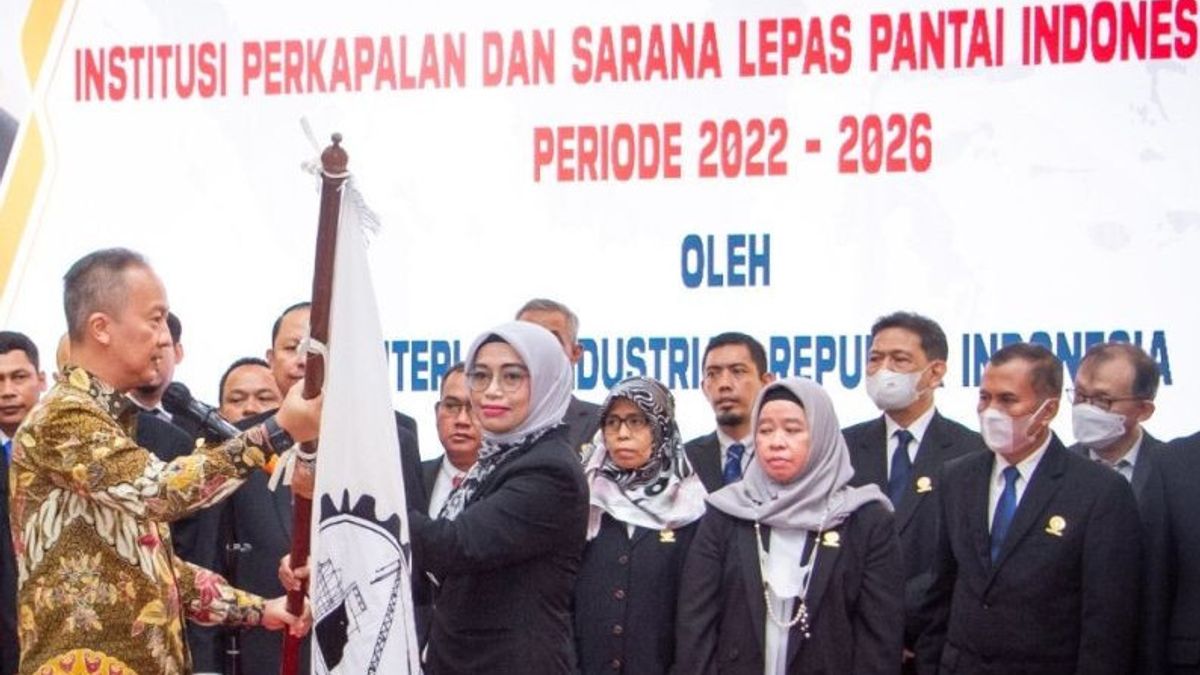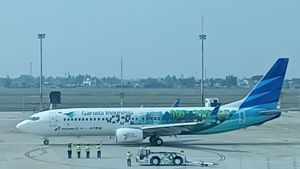JAKARTA - Minister of Industry (Menperin) Agus Gumiwang Kartasasmita said the shipping industry plays a role in realizing Indonesia as the world's maritime axis, as stated by President Joko Widodo.
“ Our job is to make Indonesia a strong and independent maritime country. For this reason, synergy is needed to formulate policies and concrete steps for developing the transportation and adequate marine infrastructure sector, ” said the Minister of Industry in a statement in Jakarta, quoted from Antara, Wednesday, October 5.
The Minister of Industry conveyed this at the inauguration of the General Chair and Management of the Central Executive Board (DPP) of the Indonesian Offshore Submission and Facilities Institute (IPERINDO) for the 2022-2026 period.
As one of the largest archipelagic countries in the world, Indonesia has the potential as a strong maritime country. With about 17,500 islands and coastlines along 81,000 kilometers, the Indonesian government places the shipping industry as one of the priority industrial sectors for development.
President Jokowi himself has introduced Indonesia's policy as the World Maritime Poros which is embodied in the five main pillars. One of the pillars is the commitment to building maritime infrastructure and connectivity by building sea highways, seaports, logistics and shipping industries, as well as marine tourism.
The Minister of Industry said that so far the shipping industry has had a strategic role in supporting the national economy because the industry has the characteristics as a labor-intensive, capital-intensive, and technologically dense sector.
“In addition, the shipping industry sector has a long reward linkage and forward linkage,” he said.
Based on the calculation of input-output in 2021, the transaction of goods and services in the ship sector and repair services will reach Rp27.65 trillion, with three main sectors being inputted, namely the ship sector and its repair services (29 percent), trade other than cars and motorcycles (19 percent), and other metal goods (6 percent).
“Meanwhile, the distribution of outputs to the three largest sectors is ships and repair services (56 percent), sea transportation services (16 percent), and lake and crossing river transportation services (11 percent),&rdquo said.
Currently, Indonesia has more than 250 shipyards spread from Sabang to Merauke, and 127 supporting industries that produce raw materials and components according to marine use standards.
“ Indonesian shipyards have experience in building various types of ships, ranging from passenger ships, cargo ships, to special destination ships with the largest gratification dock facilities, namely 300,000 Dead Weight Tonnage (DWT),” said the Minister of Industry.
Throughout 2019-2021, there have been 473 domestically built vessels with the largest proportions being Barge (274 units) and Tug (100 units). Furthermore, for the January-August 2022 period, there have been 363 requests for the construction of new ships at the domestic shipyard.
This figure shows ship owners or shipowners from both ministries and institutions, SOEs, and the private sector are increasingly trusting in domestic shipyards to meet the needs of their fleets, &rdquo said.
However, as an effort to develop a globally competitive domestic shipping industry, it is necessary to reduce raw materials and imported components, competitive financing support, as well as efficient shipbuilding procedures and stages.
The English, Chinese, Japanese, Arabic, and French versions are automatically generated by the AI. So there may still be inaccuracies in translating, please always see Indonesian as our main language. (system supported by DigitalSiber.id)
Most Popular Tags
#Prabowo Subianto #New Year #airplane accident #Hasto Kristiyanto #nataru #squid game 2Popular
03 Januari 2025, 10:38
03 Januari 2025, 09:36
03 Januari 2025, 13:25













